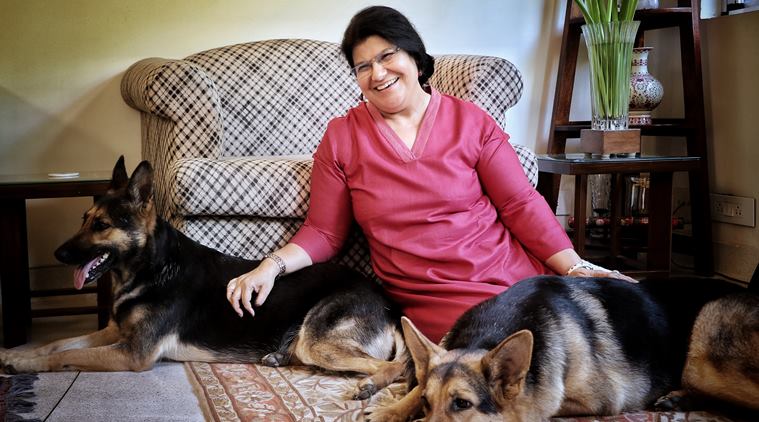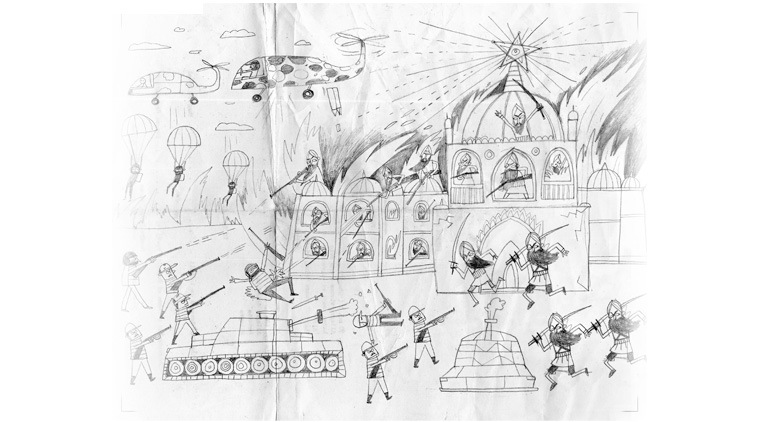Gandhi Jayanti 2019: Satyagraha is a principle to live by, says author Paro Anand

Gandhi Jayanti: "I think the mistake we have made is to deify the image of Gandhi and take him so far away from the grasp of children. Children cannot aspire to be God, but they can and must aspire to be empathetic, informed human beings who are willing to take action when they can."

2 October Gandhi Jayanti 2019: In Being Gandhi, author Paro Anand’s latest book for children, 13-year-old Chandrashekhar is bored by the annual Gandhi projects and his teacher asking him to channel his “inner Gandhi”. However, an incident shakes him and inspires him to do just that. Here, Anand tells us more about the book and the relevance of Gandhi for the younger generation.
What does Gandhi stand for and why should a child read about him today?
Gandhi means so many things to so many people. But for children, the abiding image is one of Satyagraha, sacrifice and his role through non-violence in the freedom struggle. These are probably the most abiding. And these are principles that are not fads of a time, but rather principles that generations to come should and must live by. Peaceful resistance to things you feel are wrong and sometimes putting someone else’s needs before yours. So he is certainly relevant even now.
I think the mistake we have made is to deify the image of Gandhi and take him so far away from the grasp of children. Children cannot aspire to be God, but they can and must aspire to be empathetic, informed human beings who are willing to take action when they can; 21st or 25th century, these principles must go on.
At the start of the book, Chandrashekhar tries to channel his inner Gandhi and asks himself what he can do, when there’s no country to be freed. What is your message for kids reading the book?
I would love for young people to think for themselves, make up their own minds. At a time when parents carelessly talk about this religion or that in a derogatory way, I’d like children to decide for themselves whether they want to jump on the hate bandwagon themselves or not. And children are so naturally empathetic, somehow we wean them away from empathy.
Yes, the freedom struggle is over, and Gandhi is long since gone, but struggles haven’t stopped for all. Everyone is not free. Why not think beyond yourself? My book is one that I hope will create empathy and empower young people to do just that.
What inspired you to talk about Operation Bluestar? Any personal connections?
Yes, it’s set then, but I want my readers to take the leap from the 1980’s to today and find that it is still a relevant book. It is not a historical novel, but a contemporary one. And yes, I have personal connections to that particular time and have wanted to write a story. But I would rather emphasise the larger picture.

As the boy, Chandrashekhar, in the book also remarks, parents usually shy away from discussing such serious topics with their kids. What are some points in history they could take up and at what age?
It’s not just historical context. I think one should be unafraid of one’s children. We should not underestimate what they know or their ability to understand. Children are hyper-informed, but not necessarily in a way that they truly understand. I think as parents, teachers, guardians, we need to encourage questions and conversation rather than feeling that the child won’t understand and therefore, just keep quiet. We need to learn to listen to our children, they have more wisdom than we realise. I have worked with over three lakh children, I do know this. I am constantly blown away by their knowledge and wisdom. They give me hope in the darkest times.
How do you explain mob violence to a child, how “anyone can be ‘turned’ if a situation comes up”?
First of all, by being aware of their awareness. They know there is such a thing as mob violence. They see it on television and social media. That’s the starting point. There is a lovely saying, “Prepare the path for the child or the child for the path.” That’s the choice we have in bringing up our children. Talk about how the choice to join in a mob is theirs. And they need to examine their choices carefully. How a charismatic leader may influence you and you should listen, but eventually, you must make up your mind and decide for yourselves. That there are ways to counter a violent mob without endangering yourself. And yes, that the child’s safety is very important. I am certainly not exhorting parents to put their children in the face of danger.
Chandrashekhar takes up the path of satyagraha with other children to protest the violence. With Greta Thunberg also leading the charge for action against climate change, do you think children are key agents of change?
Absolutely. Teens and children as activists is not a new concept. Look at the anti-cracker campaign. Greta Thunberg is inspiring young people, empowering them through her own actions. Just as Chadrashekhar does in his own small way. No act is too small. But compassion has to mean action.
Also Read| When Mahatma Gandhi lied for his brother
Gandhi’s saying, “An eye for an eye makes the whole world blind” comes up more than once in the book. What is its importance for the new generation?
It is important because if we don’t act now, the violence may catch up on us later. And because, if we join the hate now, it will come back to us because it has to. History does prove this.
I think Gandhi’s words have so much depth and also relevance in different contexts. Gandhi never goes out of style. I love the one about the simplest acts of kindness, because eventually, it is the small things we do that shape us – “The simplest acts of kindness are by far more powerful than a thousand heads bowing in prayer.”
‘What would Gandhi do?’ is the recurring theme in your book. How would you like parents to take the discussion forward? Any examples of simple acts of kindness?
Just yesterday, I was entering a building for an interview. I had only a couple of minutes to spare. A blind man was standing at the gate just where cars were driving in and out. Normally, I may have hurried away for my time-bound appointment. But, I asked myself, “What would Gandhi do?” I found myself stopping, giving a helping hand, making sure that there was someone who would help him to the place he had to go. It was a very small act. Another day, I was at a traffic light and a ‘hijra’ was asking for money. I did give some but I also asked her how she was and did she want some cold water which I had in a bottle. She was just so moved by this tiny act. One can be kind, it takes very little. But it’s a choice we have to make for ourselves.
As a writer who has taken up serious issues in children’s books, firstly, how do you choose your topics?
As I mentioned, I work with a lot of children, many of them in difficult circumstances through my program, Literature in Action. I always ask them what themes and subjects they want in their books. I am inspired by their answers and the conversations I have with them on their concerns. And, of course, what concerns me.
Could you recommend any books by Indian authors which talk about serious issues?
Wonderful books are now being written and published for young people on unusual themes. These are some of my favourites:
· Year of the Weeds and Grasshoppers Run by Sidhartha Sarma
· If Morning Comes by Arushi Raina
· Puu by CG Salamander
· Flyaway Boy by Jane D’Souza
· One Half from the East by Nadia Hashmi
· She Went Away by Andaleeb Wajid
· Slightly Burnt by Payal Dhar
· Talking about Muskaan by Himanjali Sankar
Also Read| Gandhi Jayanti story for kids: Marching to Freedom by Subhadra Sen Gupta
Source: Read Full Article